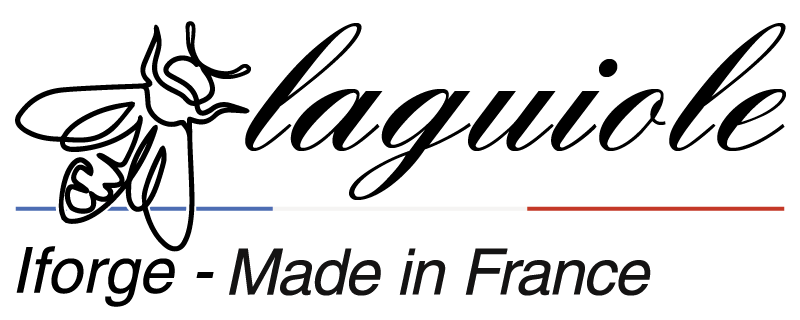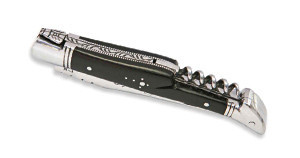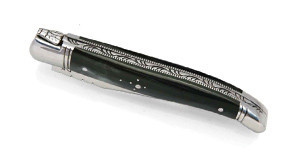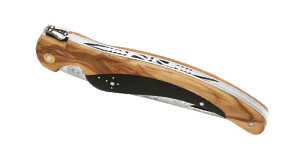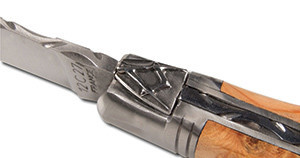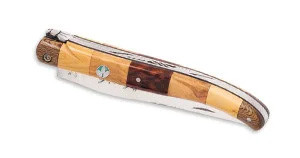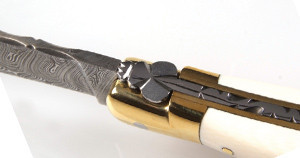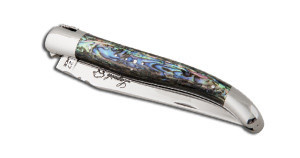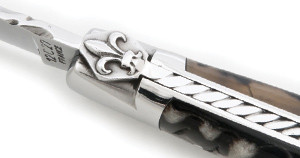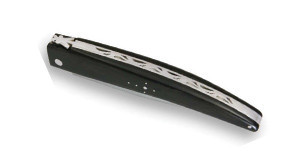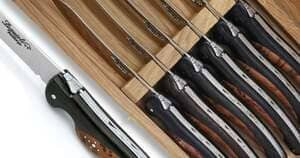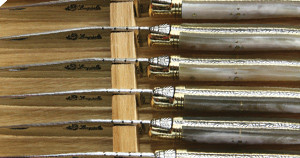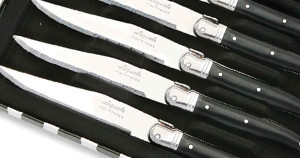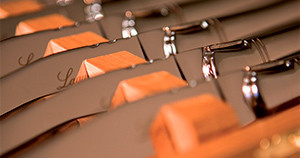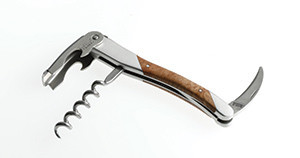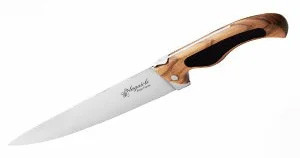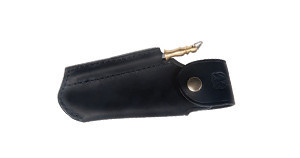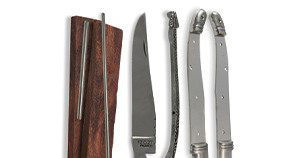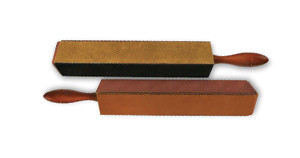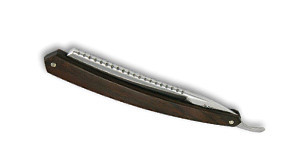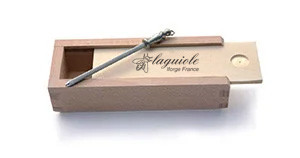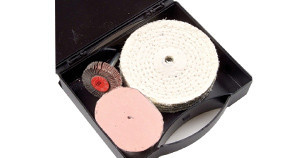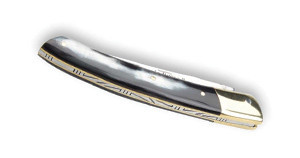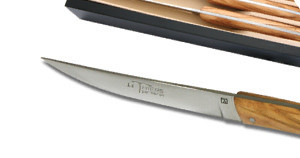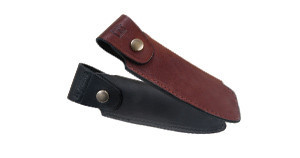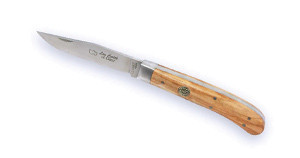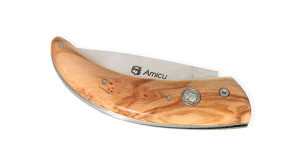Aubrac is rich in history, but today we are looking at the story of passionate cutlers at the origin of the famous Laguiole knife and its bee, recognizable among a thousand.
Let's discover cutlers, sons, nephews or uncles who take over, it's the story of entire families who have shaped with their hands, their talent and their heart the Laguiole knife that you know .
Some important dates in Laguiole cutlery.
The famous Laguiole blade, its manufacture, the style of its handle come from a long French history which begins at the beginning of the 19th century in Aubrac.
It was under the lasting peace of the reign of Charles X that the first cutlers settled in Laguiole!
In two years, the famous city of knives saw Casimir Antoine Moulin, born in 1809 in Saint-Geniez-d’Olt and Jean Antoine Glaize, settle in… Then came Pierre Jean Calmels in 1829 when he was only 16 years old!
During this century, the village of Aveyron saw the number of cutlers increase over the years: Louis Rascalou, the brothers Joseph and Jean Mas, Joseph Pagès… All worked to manufacture the bee knife in France.
In addition to closing - folding knives (the pocket will arrive later), they also manufacture table knives, wedding or kitchen knives.
In 1860, the statistics under Napoleon III indicate a production of 2000 knives for 16 cutlers (800 scissors and various tools) – figures probably underestimated by the declarants!
The oldest family of cutlers in Laguiole: La Coutellerie Moulin.
Casimir Antoine Moulin set up as a cutler in 1828 in Laguiole. This year will also mark the birth of his son François Moulin who will lend him a hand in his art until 1850. At this time, the Moulin family moved to Saint Côme d'Olt to found its own cutlery.
The tradition is transmitted from father to son in Aubrac, so François transmits the passion for cutlery to his own son who will help him as he once did with his father until 1896.
The Moulin house tirelessly produces hand-forged laguioles and also sells “own brand”
laguioles made in Thiers.
The page turns when François Moulin second of the name will stop the cutlery around 1911.
The Glaize family: the precursors.
The Glaize family: the precursors. Launched by Jean Antoine Glaize, this house began its adventure in 1829 when the cutler was only 19 years old. For lack of descendant, it is his nephew Jean François who helps him and who takes over in 1870, he will himself be helped by a boy cutler Joseph Mermet in the 1880s.
The Glaize family is off the beaten track...
- Subcontracting in Thiers.
The Glaize cutlers were the first to outsource their production to Thiers in 1889. These may be parts such as the spring, the notched blade, the fly or certain knives.
- An atypical forging method.
While the cutlers of Nogent or Châtellerault practice the grind of their seated knives, Jean Léon Glaize (known as "the Glaizou") decides to make the grind lying on a board above his grinding wheel in his workshop, as in Thiers. He also changed the method of quenching his blades: he now immersed them in olive oil to compensate for the lack of water from the Violet spring, which had dried up. It ensures that the oil ensures a better quenching quality than that of the waters of nearby springs.
- An innovative handle.
It was Leon Glaize who made the first Laguiole with an aluminum handle while fighting for France in the trenches. It is on the handle of this knife that he will then add a corkscrew at the request of the Aveyronnais who became cafe owners in Paris after the end of the war.
The Calmels Family – first Laguiole medalist.
Pierre Jean Calmels was born in 1813 at the end of the reign of Napoleon 1st. He began his cutlery business at the age of 16. He will receive a silver medal in 1868 to reward the quality of his knives, he is the first Laguiole cutler to receive this distinction.
The story goes that he would be the inventor of the Laguiole yatagan knife. His descendant Jules Calmels, he who decorated the knives with the famous bee, will contribute in a major way to the reputation of the brand of his ancestors. We owe him in particular the printing of superb illustrated catalogs of range of knives in 1898 and 1907. We can admire the blades of different sizes, handles engraved with crosses, elegant table knives or folding knives with switchblade .
The family business located in Rodez is still in operation, it is run by one of the Calmels daughters who still and always perpetuates the know-how of her family, dear to the Aubrac region.
If today Laguiole is still a village synonymous with cutlery, we owe it to the Calmels family who have continued to manufacture very good quality knives in the village. Series products are purchased in the workshops of Thiers.
Small focus also on a less famous family but to which the village of Aveyron owes its reputation: the Glandières family. Léopold Glandière opened his cutlery in 1938 in Laguiole and passed on the art and know-how of Pagès cutlery to new cutlers until 1985!
Discover the treasures of cutlery: the museum of Thiers.
What animal adorns the Laguiole knife? What are the real Laguiole knives? You will discover the intricacies and anecdotes of the famous Aveyron knife at the cutlery museum in Thiers.
You will discover why the cross appeared on the handles of knives, the evolution of the forge, how a grinding wheel works, the fly in all these states, the origin of the pocket knife with corkscrew and the secrets of the damascus blade...
Also find even more history and stories of families of cutlers between the pages of Christian Lemasson's book "The History of the Laguiole Knife" at Éditions de la Montmarie ([email protected]).
Also discover the history of cutlery in another of our articles.

